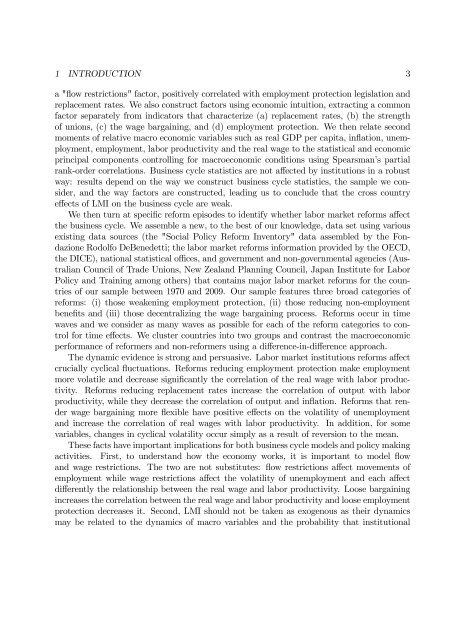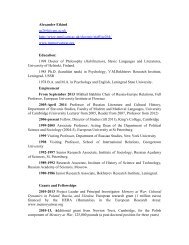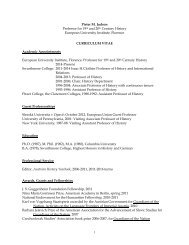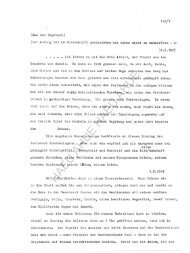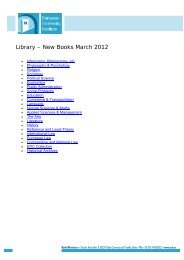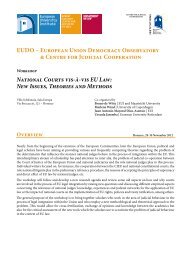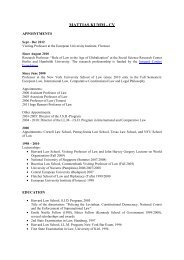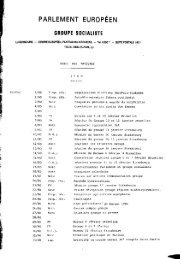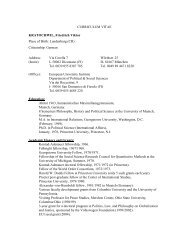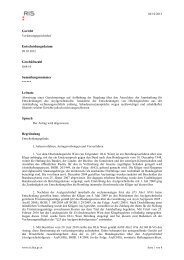Do labor market institutions matter for business cycles?∗ - European ...
Do labor market institutions matter for business cycles?∗ - European ...
Do labor market institutions matter for business cycles?∗ - European ...
Create successful ePaper yourself
Turn your PDF publications into a flip-book with our unique Google optimized e-Paper software.
1 INTRODUCTION 3<br />
a "flow restrictions" factor, positively correlated with employment protection legislation and<br />
replacement rates. We also construct factors using economic intuition, extracting a common<br />
factor separately from indicators that characterize (a) replacement rates, (b) the strength<br />
of unions, (c) the wage bargaining, and (d) employment protection. We then relate second<br />
moments of relative macro economic variables such as real GDP per capita, inflation, unemployment,<br />
employment, <strong>labor</strong> productivity and the real wage to the statistical and economic<br />
principal components controlling <strong>for</strong> macroeconomic conditions using Spearsman’s partial<br />
rank-order correlations. Business cycle statistics are not affected by <strong>institutions</strong> in a robust<br />
way: results depend on the way we construct <strong>business</strong> cycle statistics, the sample we consider,<br />
and the way factors are constructed, leading us to conclude that the cross country<br />
effects of LMI on the <strong>business</strong> cycle are weak.<br />
We then turn at specific re<strong>for</strong>m episodes to identify whether <strong>labor</strong> <strong>market</strong> re<strong>for</strong>ms affect<br />
the <strong>business</strong> cycle. We assemble a new, to the best of our knowledge, data set using various<br />
existing data sources (the "Social Policy Re<strong>for</strong>m Inventory" data assembled by the Fondazione<br />
Rodolfo DeBenedetti; the <strong>labor</strong> <strong>market</strong> re<strong>for</strong>ms in<strong>for</strong>mation provided by the OECD,<br />
the DICE), national statistical offices, and government and non-governmental agencies (Australian<br />
Council of Trade Unions, New Zealand Planning Council, Japan Institute <strong>for</strong> Labor<br />
Policy and Training among others) that contains major <strong>labor</strong> <strong>market</strong> re<strong>for</strong>ms <strong>for</strong> the countries<br />
of our sample between 1970 and 2009. Our sample features three broad categories of<br />
re<strong>for</strong>ms: (i) those weakening employment protection, (ii) those reducing non-employment<br />
benefits and (iii) those decentralizing the wage bargaining process. Re<strong>for</strong>ms occur in time<br />
waves and we consider as many waves as possible <strong>for</strong> each of the re<strong>for</strong>m categories to control<br />
<strong>for</strong> time effects. We cluster countries into two groups and contrast the macroeconomic<br />
per<strong>for</strong>mance of re<strong>for</strong>mers and non-re<strong>for</strong>mers using a difference-in-difference approach.<br />
The dynamic evidence is strong and persuasive. Labor <strong>market</strong> <strong>institutions</strong> re<strong>for</strong>ms affect<br />
crucially cyclical fluctuations. Re<strong>for</strong>ms reducing employment protection make employment<br />
more volatile and decrease significantly the correlation of the real wage with <strong>labor</strong> productivity.<br />
Re<strong>for</strong>ms reducing replacement rates increase the correlation of output with <strong>labor</strong><br />
productivity, while they decrease the correlation of output and inflation. Re<strong>for</strong>ms that render<br />
wage bargaining more flexible have positive effects on the volatility of unemployment<br />
and increase the correlation of real wages with <strong>labor</strong> productivity. In addition, <strong>for</strong> some<br />
variables, changes in cyclical volatility occur simply as a result of reversion to the mean.<br />
These facts have important implications <strong>for</strong> both <strong>business</strong> cycle models and policy making<br />
activities. First, to understand how the economy works, it is important to model flow<br />
and wage restrictions. The two are not substitutes: flow restrictions affect movements of<br />
employment while wage restrictions affect the volatility of unemployment and each affect<br />
differently the relationship between the real wage and <strong>labor</strong> productivity. Loose bargaining<br />
increases the correlation between the real wage and <strong>labor</strong> productivity and loose employment<br />
protection decreases it. Second, LMI should not be taken as exogenous as their dynamics<br />
may be related to the dynamics of macro variables and the probability that institutional


